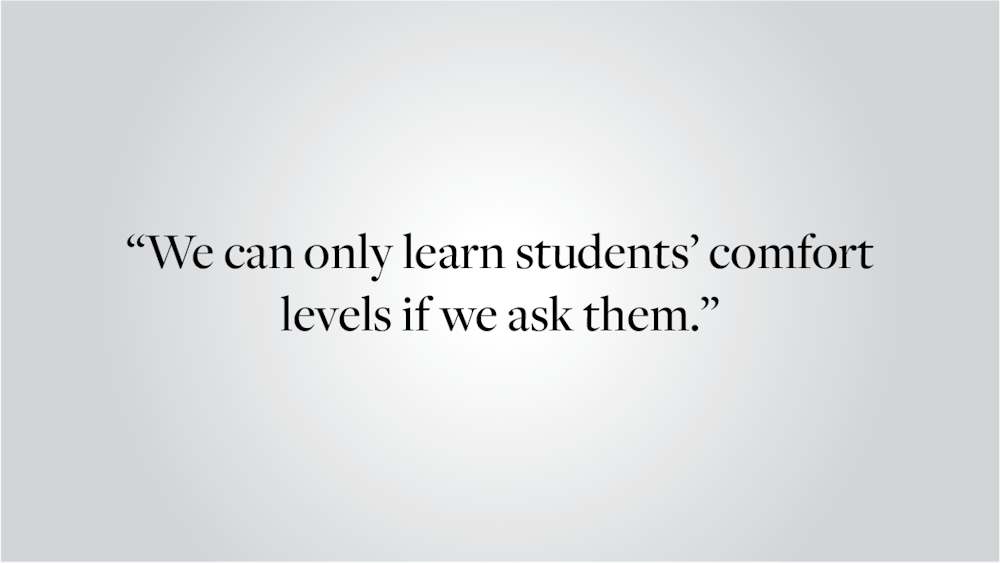The campus mask mandate is ending today. Save for a few settings, including classrooms where instructors decide otherwise, vaccinated individuals no longer have to wear masks in public spaces.
For some, this is a cause for celebration. At long last, we are moving forward in this pandemic, finally mask-free. But for others, the new policy is a cause for concern. Fears about the effects of COVID-19 still linger alongside the all-too-familiar question: Are we moving towards normalcy too fast?
Polling both nationwide and on our own campus suggests that people are divided about what restrictions should be loosened. When the community’s stance is unclear — and removing mask requirements could lead to more risk — classes and clubs should survey students how they feel about masks and consider mandating them in certain cases.
How do students feel about wearing masks in large, cramped lecture halls? What about small discussion sections? Are student organizations ready for the change? Whether through an online form, email feedback or an in-class survey, there are many ways in which instructors and student leaders can proactively gauge how students feel about masking policies. We can only learn students’ comfort levels if we ask them.
Perhaps students’ enthusiasm to go mask-free is weaker than administrators assumed. And perhaps there are perspectives we have overlooked. The pandemic has already deprived immunocompromised people of so many experiences ― the new policy could shatter one of their last bastions of safety. If going mask-free is unpopular or exclusionary in a given setting, instructors and student group leaders have compelling reasons to continue requiring masks.
Of course, masking policies will not go on forever, but for the time being, they may still make sense in certain contexts. While the pandemic’s trajectory has been improving on College Hill, the administration’s questionable decision to end asymptomatic testing requirements for undergraduates at the same time as its mask mandate hinders the University’s ability to recalibrate its response if cases rise unnoticed. This may add to students’ anxieties over the policy change.
Masks have become a flashpoint in the culture wars, but they don’t need to be on College Hill. Wearing a KN95 may be uncomfortable for some, but this could be a price worth paying if it makes others feel safer or more comfortable.
Students already go mask-free in many places: the gym, dorm parties and dining halls, to name a few. But in classrooms, for example, students sit together, often in close proximity, for extended periods of time. Not to mention, the COVID-cautious can’t avoid the classroom in the same way they can avoid a party, and there aren’t grab-and-go boxes for knowledge. In settings like these, it is best to gauge student opinion and comfort levels before deciding to make masking optional.
We, too, miss the days when we could decipher someone’s expression in class using more than just the slant of their eyebrows. We are excited about what the end of masking could bring, but only if students are ready. And we can only find out if we ask.
Editorials are written by The Herald’s Editorial Page Board. This editorial was written by its editor Johnny Ren ’23 and members Catherine Healy ’22, Caroline Nash ’22.5, Augustus Bayard ’24, Devan Paul ’24 and Kate Waisel ’24.





